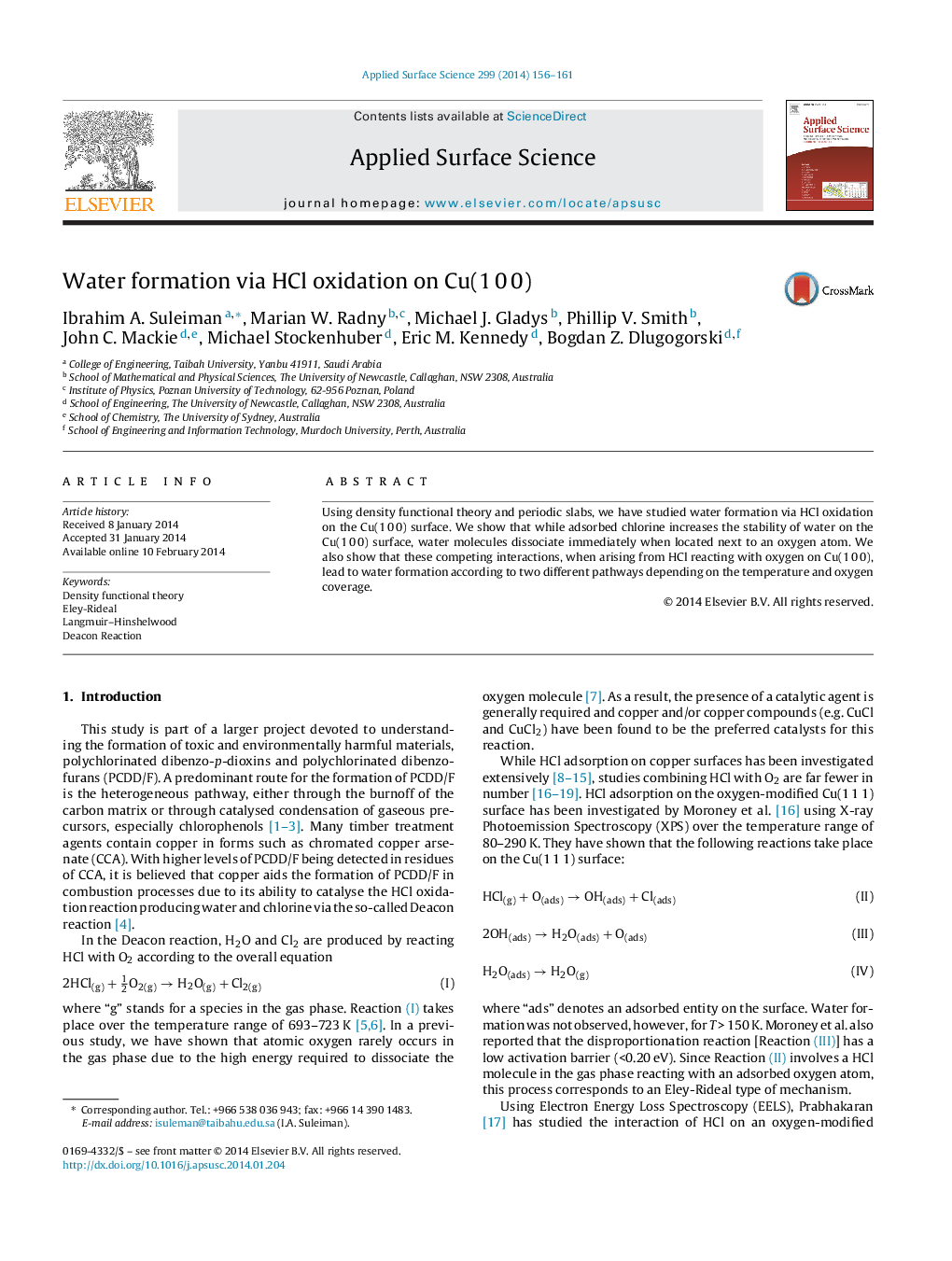| Article ID | Journal | Published Year | Pages | File Type |
|---|---|---|---|---|
| 5361911 | Applied Surface Science | 2014 | 6 Pages |
â¢Pre-adsorbed chlorine increases the stability of water on Cu(1 0 0).â¢Two different pathways describe water formation on Cu(1 0 0) via HCl oxidation.â¢The mechanism of H2O formation depends on the temperature and oxygen coverage.
Using density functional theory and periodic slabs, we have studied water formation via HCl oxidation on the Cu(1Â 0Â 0) surface. We show that while adsorbed chlorine increases the stability of water on the Cu(1Â 0Â 0) surface, water molecules dissociate immediately when located next to an oxygen atom. We also show that these competing interactions, when arising from HCl reacting with oxygen on Cu(1Â 0Â 0), lead to water formation according to two different pathways depending on the temperature and oxygen coverage.
Graphical abstractThis work investigates water formation on the Cu(1Â 0Â 0) surface via HCl oxidation using density functional theory and periodic slabs. We show that there are two different pathways for water formation on the surface depending on the temperature and oxygen coverage.Download full-size image
